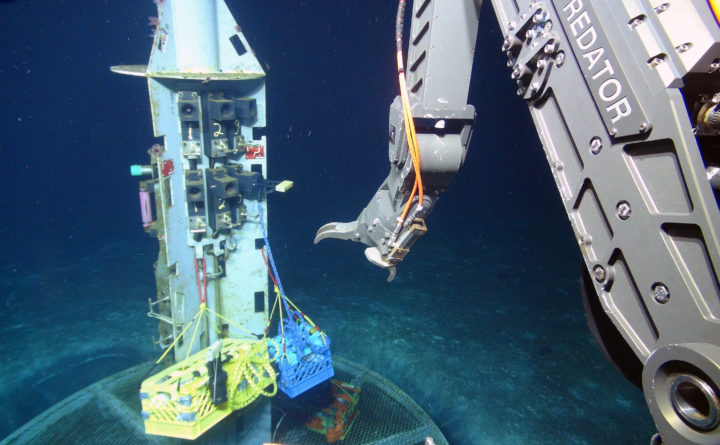
Deep in the ocean off the Pacific Northwest colonies of unusual microbes thrive in an environment otherwise hostile to life. It’s these ancient microbes that scientists say may hold clues to the evolution of life on our planet — and beyond.
In 2011, Beth Orcutt of the Bigelow Laboratory for Ocean Sciences in Maine and other researchers from the University of Hawai‘i at Manoa and the Department of Energy Joint Genome Institute sailed to the Juan de Fuca Ridge, a mid-ocean ridge where two oceanic plates are separating and forming new ocean crust off the coast of Washington state.
The team used a novel technique to analyze the genetic blueprint of hydrothermarchaeota, uncovering techniques these microbes use to survive in a harsh, seismically active environment and their relationship to the Earth’s earliest known life forms, according to results of a study published earlier this year in The ISME Journal, a publication of the International Society for Microbial Ecology.
An analysis of hydrothermarchaeota’s genome revealed that the microbes belong to a group of single-celled life forms called archaea that evolved early in Earth’s history, according to the study. Archaea were discovered in the late 1970s and are often found living in the Earth’s most extreme environments, including rift vents in the deep ocean where temperatures exceed 212 degrees Farhenheit, according to the University of California at Berkeley’s Museum of Paleontology. Archaea are believed to have first appeared on Earth about 3.8 billion years ago, a time when conditions on the planet were still inhospitable to life.
[3.4-billion-year-old ’microfossils’ provide evidence of earliest life]
“Studying these unique microbes can give us insights into both the history of Earth and the potential strategies of life on other planets,” Stephanie Carr, the study’s lead author and a former postdoctoral researcher with Orcutt who is now an assistant professor at Hartwick College in New York, said in a statement announcing the findings. “Their survival strategies make them incredibly versatile, and they play an important, overlooked role in the subsurface environments where they live.”
The study found hydrothermarchaeota metabolize carbon monoxide and sulfate to provide the microbes the energy needed to grow, according to the study. A genetic analysis also showed the microbes have the ability to move, an important survival strategy in a harsh environment that offers few nutrients to support life.
This article originally appeared on www.bangordailynews.com.




